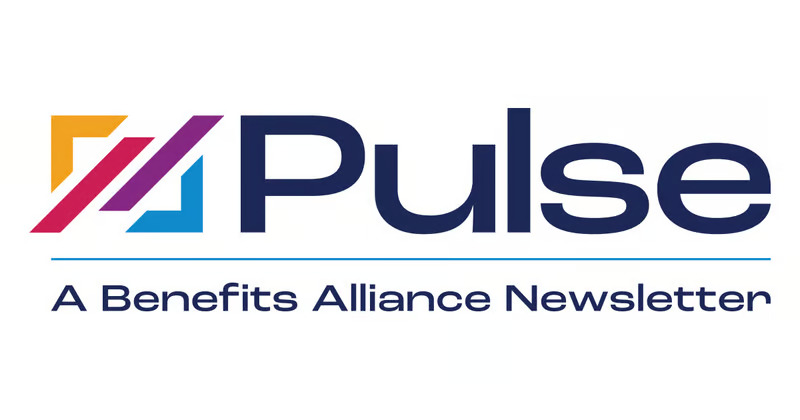A year ago, events were still questionable, yet the desire to get back together was evident. Last month, Benefits Alliance held its first SPARK Conference and Benefits Alliance Gala in Toronto. Doubling down to satisfy an industry that loves to network, it was a week in Toronto that led to many firsts, including the start of this newsletter.

Thank you to everyone who attended the Spark Conference and/or the Benefits Alliance Gala!
The Benefits Alliance Pulse is a new, industry-focused, weekly newsletter that is delivered to Canadians who are interested in Group Benefits, Group Retirement Solutions, and anything related to improving well-being within those areas. This newsletter is powered by Benefits Alliance as a way to further connect the industry.
Advisors Stepping up for Mental Health
When Christine MacDonald talks about mental health benefits during education sessions for employees, she can sense the increased attention. More eyes are on her. When she asks for feedback, as she always does, people usually respond that they didn’t know the extent of their benefits plan’s coverage for those mental health services. And more often lately, someone shares a personal story about using those services.
“It could be about themselves, their child or their spouse. They’re quite open because they want others to know these benefits can help them as well,” says MacDonald, Partner and Right Path Advisor at SelectPath Benefits & Financial, a Benefits Alliance member firm in Halifax, Nova Scotia
Those moments reinforce MacDonald’s commitment to bringing mental wellness into the conversation during meetings with clients and educational sessions with plan members. “I’ve been really focused on getting in front of members and including mental health as part of the overall discussion about the benefits provided by their employer. It’s important to position it this way because mental health and physical health are so interconnected,” says MacDonald.
She adds that this approach “helps normalize the conversation. When people see how comfortable you are talking about it, they become comfortable too. And that means they are more likely to get help if they need it.”
Mobilizing benefits advisors
As Chair of Benefits Alliance’s Mental Health Committee, MacDonald is shepherding its plan to build the comfort and confidence levels of all advisors under Benefits Alliance’s umbrella. “There are three main components: personal education about mental wellness, how to approach clients about a mental health strategy, and vetting the many programs available to support that strategy,” she explains.
Earlier this year, the Mental Health Committee released its Mental Health Resource Guide to help advisors recommend resources for plan sponsors. The Resource Guide includes regional resources and is updated quarterly. The committee is exploring options to train advisors about mental health, and pulling together tools to help plan sponsors with decision-making (for example, an easy-to-read comparison of employee assistance programs).
Mental Health Week
While mental wellness is a year-round conversation, MacDonald notes that special events can serve as a springboard for plan sponsors. For example, the Canadian Mental Health Association’s (CMHA) annual Mental Health Week takes place from May 1 to 7 this year.
Guided by the theme #GetReal, the campaign will focus on restoring “empathy reserves” that have been sorely put to the test during the pandemic. Posters and other materials to raise awareness—and personal comfort levels—will be available at no cost.
The workplace imperative
The pandemic has triggered a shift in thinking about supporting mental health in the workplace, notes Katharine Coons, CMHA’s national senior manager of workplace mental health. “Before it was more of an ethical decision for employers or the right thing to do. Then the pandemic really brought forward the business case. A lot of research was publicized in the media highlighting the links between mental health, productivity and the bottom line,” she says.
A psychologically healthy and safe workplace has also become a competitive advantage when it comes to recruitment and retention. “Workers are no longer willing to tolerate jobs that leave them in a constant state of stress or fatigue,” states Coons.
Her biggest tip for employers? “Start with understanding employees’ needs. Take time to connect first with the actual end user, because every organization is different, every industry is different. You don’t want to develop a program that’s not used because it doesn’t meet employees’ needs.”
CMHA has three main offerings for workplace mental health:
- Not Myself Today, an online portal with learning modules and tools for managers and employees;
- customized corporate training; and
- the Psychological Health and Safety Professional Certificate program for organizations implementing the Mental Health Commission of Canada’s National Standard of Canada for Psychological Health and Safety in the Workplace
Size: not an issue
As a final note, Coons emphasizes that employers of all sizes can make a difference. “You don’t have to be a big team with a big budget to make big changes. We also need to look at policies and procedures, how we communicate in the workplace, how to maintain civility and respect, how we support each other, workload management and clear leadership.”
Small employers can also take advantage of their size. “They can involve everybody in a very meaningful way. They can pivot and try more things out and get feedback quite quickly,” notes Coons.
MacDonald can attest to the results of that. “I hear so many good-news stories from plan members. It’s so gratifying to know that we’re doing the right thing. We are doing good work.”
